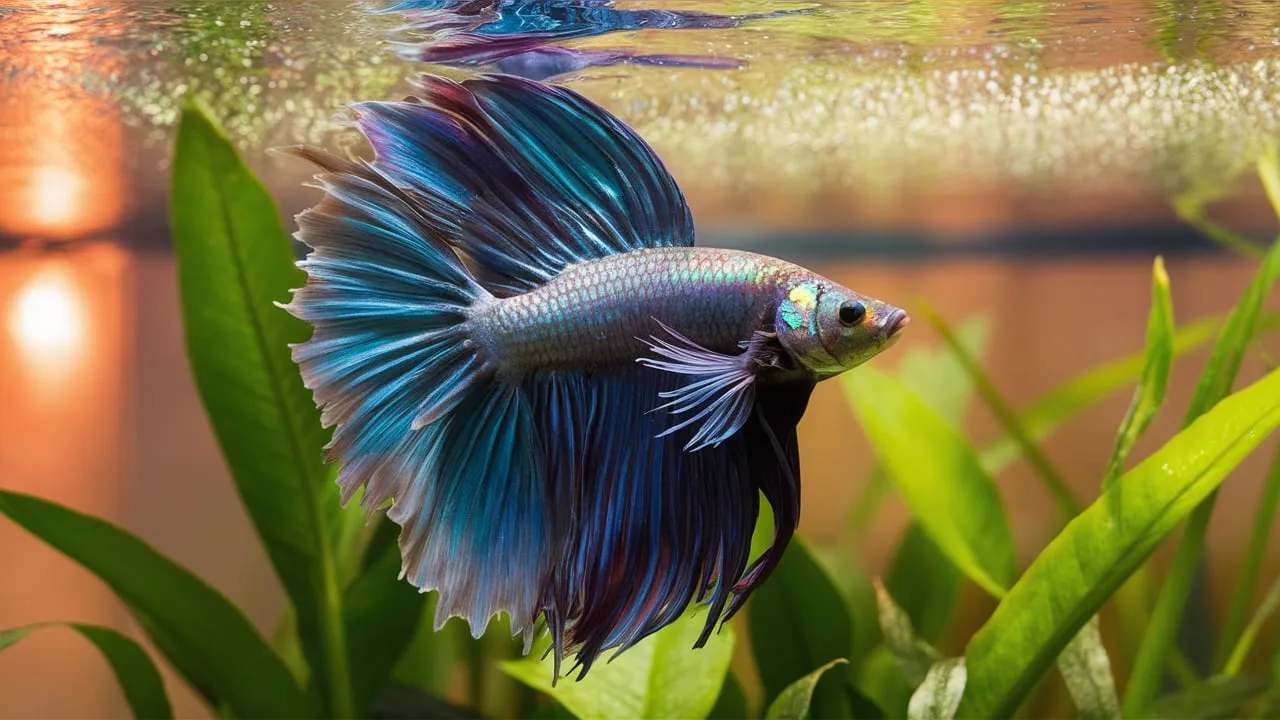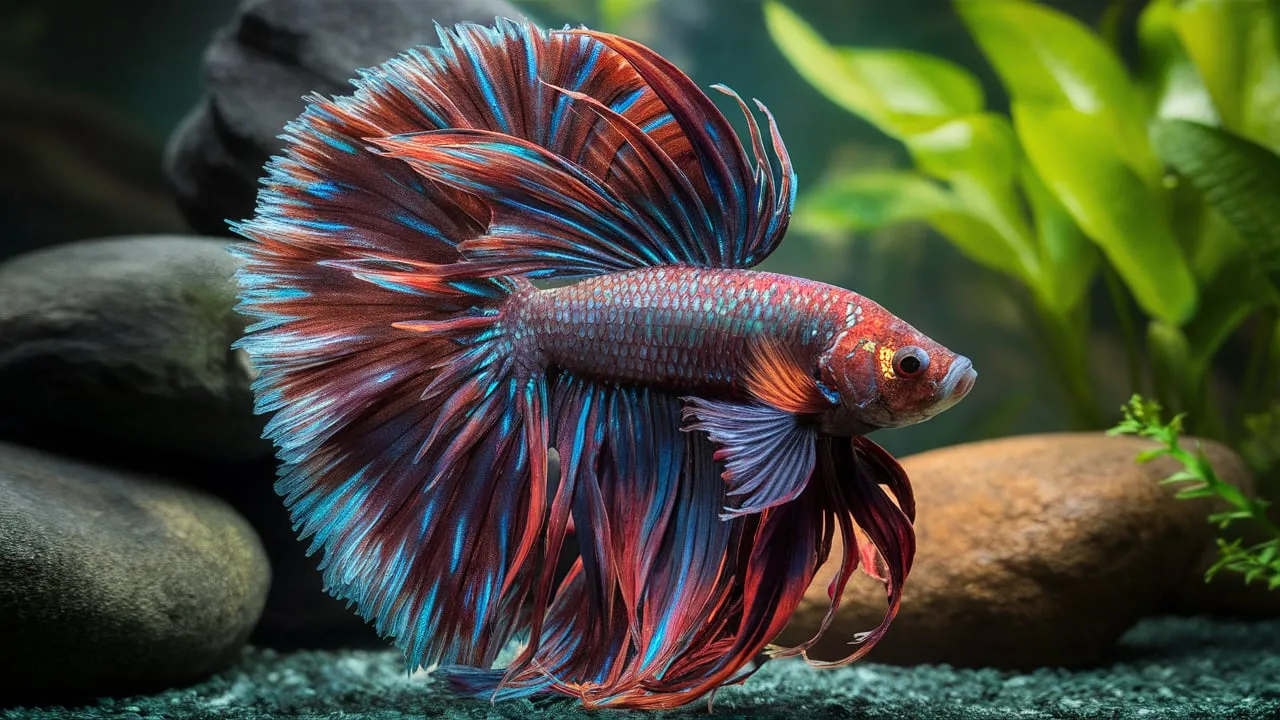When it comes to betta fish, most enthusiasts are familiar with their vibrant colors and unique personalities. However, did you know that The Biggest Betta Fish?
In this guide, brought to you by Betta Fish Guide, we will explore the largest betta fish, their unique characteristics, and tips for their care.
Understanding Betta Fish Size
Before we delve into the realm of giant bettas, it’s essential to establish a baseline for typical betta fish size.
Standard Betta Fish Dimensions
On average, a fully grown betta fish measures:
- Length: 2.25 to 3 inches (5.7 to 7.6 cm)
- Height: 1.5 to 2 inches (3.8 to 5 cm)
These measurements exclude the tail fin, which can add an additional 1 to 2 inches to the overall length.

Factors Influencing Betta Fish Size
Several factors contribute to a betta’s size:
- Genetics and Breeding
The size of a betta fish is primarily determined by its genetics. Some strains, like the Giant Betta or Halfmoon Betta, are known for their larger size potential. Selective breeding practices have played a significant role in enhancing these traits, resulting in individuals that can surpass the typical size range of their species.
- Environmental Factors
While genetics play a crucial role, environmental factors can also influence a betta’s size.
- Tank Size
Providing a spacious tank allows a betta to grow to its full potential. A larger tank provides ample swimming space, reduces stress, and promotes overall well-being.
- Water Quality
Clean, well-maintained water is essential for healthy growth. Regular water changes, proper filtration, and stable water parameters are crucial for optimal development.
- Diet
A balanced diet rich in protein and essential nutrients is vital for growth. Feeding a variety of high-quality betta foods, including flakes, pellets, and live foods, can contribute to a betta’s size.
- Temperature
Maintaining a consistent temperature within the optimal range for betta fish (78-82°F or 25-28°C) supports healthy growth and development.
The Biggest Betta Fish: Breaking Records
Now, let’s explore the world of exceptionally large betta fish that have captured the attention of aquarists worldwide.
Giant Betta Varieties
Some betta varieties are known for their larger-than-average size:
- King Betta: These fish can reach lengths of up to 3.5 inches (8.9 cm) without the tail.
- Giant Betta: True giants can grow to an impressive 4 inches (10.2 cm) or more in body length.
- Plakat Betta: While not always larger in length, these fish often have a more robust body structure.
Record-Breaking Bettas
While official records for the largest betta fish are scarce, there have been reports of exceptional specimens:
- Some aquarists claim to have owned bettas reaching 5 inches (12.7 cm) in body length.
- The longest recorded betta, including tail fin, was reportedly over 7 inches (17.8 cm) long.
It’s important to note that these extreme sizes are rare and often the result of selective breeding or exceptional care.

The Biggest Betta Fish Care
For those wondering how to maximize their betta’s growth, several factors come into play:
Genetics and Breeding
The genetic makeup of a betta fish plays a crucial role in determining its potential size. Selective breeding programs have focused on developing larger betta varieties, such as the Giant and King bettas.
Optimal Nutrition
A balanced and varied diet is essential for healthy growth:
- High-quality betta pellets as a staple
- Frozen or live foods like bloodworms, brine shrimp, and daphnia
- Occasional treats like mosquito larvae or tubifex worms
Spacious Living Conditions
Contrary to popular belief, bettas thrive in larger tanks:
- Minimum tank size: 5 gallons (19 liters)
- Ideal tank size for maximum growth: 10 gallons (38 liters) or more
- Proper filtration and regular water changes
Water Parameters
Maintaining optimal water conditions is crucial:
- Temperature: 78-80°F (25.5-26.7°C)
- pH: 6.5-7.5
- Ammonia and nitrite: 0 ppm
- Nitrate: <20 ppm
Stress Reduction
A stress-free environment promotes healthy growth:
- Provide hiding spots and plants
- Avoid aggressive tank mates
- Maintain a consistent care routine
The Science Behind Betta Fish Growth
Understanding the biological factors that influence betta fish growth can help aquarists provide optimal care:
Growth Hormones
Bettas, like other fish, produce growth hormone (GH) that regulates their development. Factors such as nutrition, water quality, and stress levels can affect GH production.
Metabolism and Energy Allocation
A betta’s metabolism plays a crucial role in growth:
- Higher temperatures (within the optimal range) can increase metabolism and growth rate
- Proper nutrition ensures energy is available for growth
Sexual Dimorphism
Male bettas typically grow larger than females due to sexual dimorphism, a characteristic influenced by sex hormones and evolutionary adaptations.
Conclusion
The world of big betta fish is a testament to the fascinating diversity within the Betta splendens species. From the standard-sized beauties to the awe-inspiring giants, these fish continue to captivate aquarists with their size, color, and personality.
Remember, while size can be impressive, the health and well-being of your betta should always be the top priority. By implementing the care tips and insights shared in this guide, you’ll be well-equipped to nurture your betta, regardless of its size, into a thriving, vibrant aquatic companion.

Related Posts
Are Betta Fish Nocturnal? Mystery of Betta Sleep Patterns
Shrimp Tank Mates: Choosing The Right Companions
Are Fish Omnivores? A Look at Fish Feeding Habits